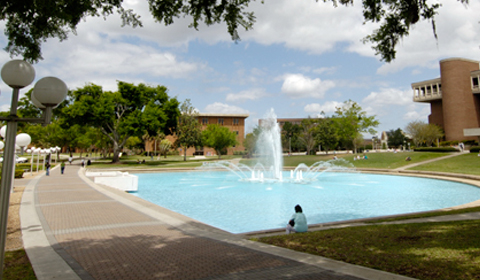The Utilities and Energy Services Department at the University of Central Florida has asked the UCF community to voluntarily reduce water use in response to a Water Shortage Water issued by the St. Johns River Water Management District.
University officials say current water levels have not reached a point where anticipated demand cannot be met and that Florida’s water resources can continue to be protected under the conditions.
The voluntary reduction has been issued for all water source within the district with the exception of reclaimed water. An increase in water conservation practices has been asked in addition to the warning.
For information on the Water Shortage Warning, visit http://www.sjrwmd.com/facts/watershortageorder.html
–
Summary
In March 2017, the St. Johns River Water Management District Governing Board approved a Water Shortage Warning for seven counties due to hydrologic trends that reflected the effects of below-average rainfall across parts of the district. In May 2017, the order was expanded to include all counties within the district’s jurisdiction.
The objective of the Water Shortage Warning Order is to reduce water use and increase awareness of the need for conservation. Although conditions have not yet reached a point where there is an expectation of insufficient water to meet anticipated demand and protect water resources, current conditions do warrant heighted water conservation in all areas within the jurisdiction of the district.
The order also helps to align the water management districts as they work to promote compliance and support uniform water use restriction across Florida.
What is a Water Shortage Order?
The ultimate objective of a water shortage order is to reduce water use to prevent potential adverse environmental and economic impacts during drought conditions, among which are:
- Supply problems for private well users due to lower aquifer levels
- Lower lake levels, beyond the natural lower levels resulting from the drought itself, which might increase impacts to natural systems and recreational or commercial uses
- Creation of a deficit from which it would take longer to recover with the return of normal rainfall
- Degrading water quality in wells located in some parts of the district
- Greater potential for sinkhole formation in limited areas
How does a Water Shortage Order work?
The decision to issue a water shortage order is data-driven. District staff evaluate current hydrologic conditions (rainfall, water levels, flows in rivers and springs, etc.) and develop recommendations for formal action. Orders are issued in phases: warning, phase one through four. Each have the goal to reduce water use and ensure enough water is available to meet essential demands.
A Water Shortage Warning indicates the need to increase awareness in anticipation of potential prolonged drought through largely voluntary water conservation activities.
Water Shortage phase one through four indicate the need to implement both voluntary and mandatory restrictions that are intended to reduce overall water use.
How do I know if I’m in an area covered by the Water Shortage Order?
The district collaborates with local governments, utilities and the media to communicate any requirements. Information is also available on the district’s website. Permit holders in the affected area are sent a notification letter or email.
We also coordinate with neighboring water management districts. A map is available to help determine in which water management district your home or business is located: www.sjrwmd.com/maps.html.




